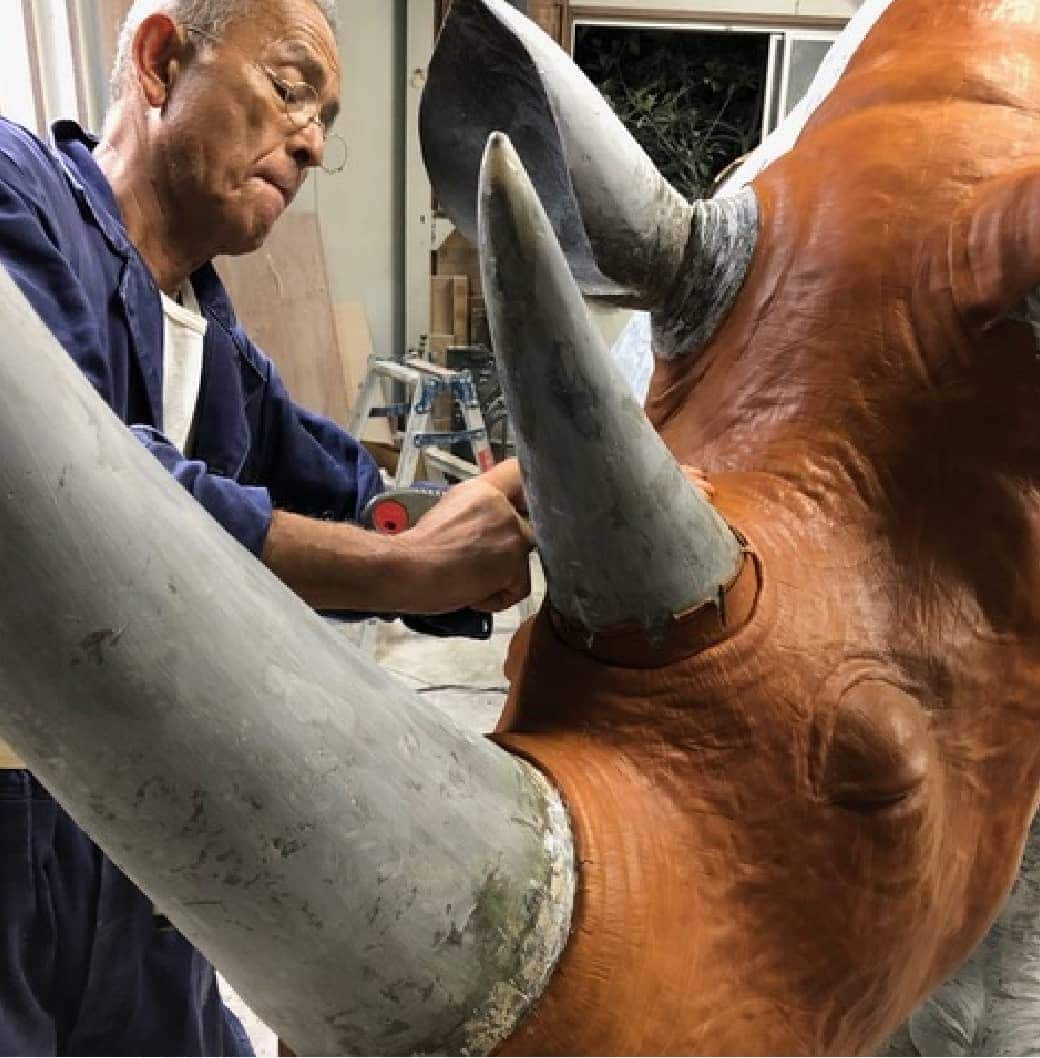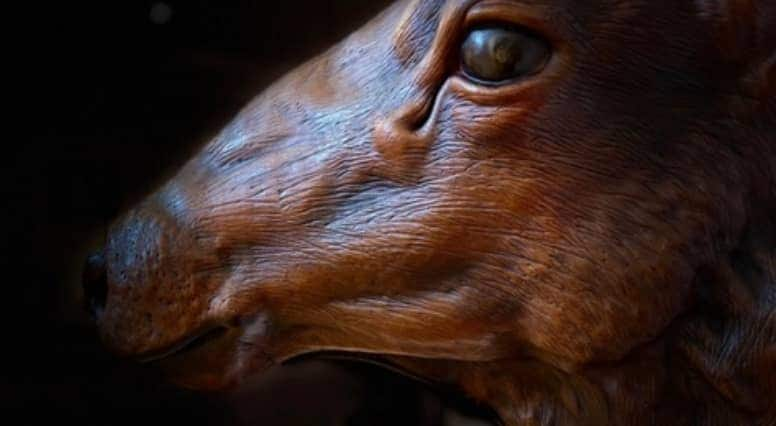Crafts
Handicrafts of Tottori that
bring art to everyday life
Where the Mingei Movement still lives on
People used to make items for daily use by hand. Even in this modern world flooded with mass-produced goods due to mechanization, many traditional crafts continue to be handmade in Tottori to this day. The key figure behind this was Yoshida Shoya (1898-1972), a local native who contributed to the succession and development of the “mingei” folk craft movement advocated by Yanagi Soetsu. Based on the idea that “beauty could be found in common and utilitarian everyday objects,” Yoshida initiated a new mingei movement in Tottori around 1930. Bernard Howell Leach, a British studio potter who had a close relationship with Yoshida and Yanagi and contributed to the foundation of the Japan Folk Crafts Museum, was also captivated by the charms of the handicrafts and often visited Tottori.

Handicrafts that blend in with everyday life
Handicrafts are part of the life of people in Tottori. In addition to pottery, Inshu washi paper (eastern Tottori), Yumihama Gasuri textiles (western Tottori) and other traditional crafts still remain as industry and are found in people's daily lives. In particular, pottery is practiced widely with many kilns dotting the prefecture.


Using clay and glaze made from natural materials sourced locally including soil and plants, the ceramics characterized by their unique colors and textures are one of a kind not found anywhere else. Tableware made locally is also used for daily dining. Handicrafts of Tottori combine both beauty and practicality.
Developed in the pursuit of beauty in everyday objects, Tottori's handicrafts are also appreciated as art. As just two examples, Nakano Chikugei in Kurayoshi City is specialized in artistic bamboo crafts such as bags, flower vases and lighting. Their designs and techniques are so exquisite that it is hard to believe they are made of bamboo.

Meanwhile, leather dolls and animals created by artist Hideo Motoike are highly acclaimed both in Japan and abroad. In 2021, he opened the Motoike Museum of Leather Art in Yonago City. In this way, Tottori's age-old tradition of handicrafts continues to develop in the form of art.

Tottori's folk art has been treasured both as daily products and art by the locals while continuing to evolve with time. Homemade dishes served on handcrafted tableware look even more appetizing while creating a richer and more calming living space. Japan's beautiful textiles and tableware also make a wonderful souvenir or dining table decor for visitors from abroad. Why not come and find your favorite item in Tottori?
Tottori's handicrafts
Tottori, where traditional handicrafts have taken root in people's daily life, is a treasure trove of beautiful crafts including pottery, textiles and leatherwork. Come and experience its exquisite handicrafts for yourself and learn a whole new aspect of Japan you have yet to see.
Select Area
Western/Central/Eastern

-
Pottery

EAST Inshu Nakai Kiln
Since its opening in 1945, Nakai Kiln has been making innovative yet practical ceramics. Particularly popular are modern-looking plates that combine green, black and white glaze made from locally sourced natural materials. Their products can be purchased at the gallery next to the kiln.
-
Others

EAST Aoya Washi Studio
The town of Aoya is the largest producer in Japan of handmade, high-quality Inshu washi paper for calligraphy. In addition to a number of washi exhibits, the facility also offers a hands-on paper-making workshop in which visitors can enjoy creating their own washi paper.
-
Pottery

EAST Tottori Takumi Kogei
Opened in 1932 by Yoshida Shoya, a local mingei (folk craft) producer, Takumi Kogei is Japan's oldest craft specialty store that offers a wide variety of selection from pottery, woodwork, dyed fabrics and lacquerware produced not only in Tottori but all over Japan.
-
Others

CENTRAL Nakano Chikugei
Located in Kurayoshi City that is famous for its Shirakabe white-walled traditional storehouses, Nakano Chikugei is a workshop specialized in bamboo crafts. The timeless beauty of the pieces, which is achieved by the unique “marutake” processing method that uses bamboo in its round form without splitting it, is appreciated by many customers.
-
Others

WEST Motoike Museum of Leather Art
The museum offers a unique world of leather like never seen before. The leather dolls as well as the life-sized animals created by the world's one and only leather doll maker are so real that they seem to come to life.
-
Textiles

WEST Yumihamagasuri Koubou B workshop
Yumihama Gasuri is an indigo dye cotton fabric with roughly 250 years of history produced in the Yumigahama area in western Tottori. The appeal of the textile are a variety of designs, from traditional Japanese patterns to geometric styles, as well as the simple texture. At Yumihamagasuri Koubou B, all the work is done by hand, including the cotton cultivation.
-
Textiles

EAST Japanese indigo blue dye studio Chizu Blue
Keeping all aspects authentically made in Chizu, every process is carried out by hand from growing indigo seeds. Imbued in their products are the care for users and affection for their hometown.
-
Others
 © Tottori Pref.
© Tottori Pref.
WEST Wagasa Densho Kan (Folklore Umbrella Museum)
“Wagasa” is traditional Japanese umbrella made of wood and paper that exudes a natural warmth. Here, visitors can learn the process of making the umbrellas, one by one exquisitely by hand.
-
Textiles

WEST Matsuda Somemonoten (Matsuda dyeing shop)
Dedicated to producing various dyed items using traditional techniques that have been handed down for over 300 years, the shop is particularly famous for its “tairyo-bata,” or the fisherman's flags hoisted on a boat to signify a bountiful return. The flags depict the spirit of the fishermen in their vibrant colors and powerful designs.
Select Area
Western/Central/Eastern

-
Pottery

EAST Inshu Nakai Kiln
Since its opening in 1945, Nakai Kiln has been making innovative yet practical ceramics. Particularly popular are modern-looking plates that combine green, black and white glaze made from locally sourced natural materials. Their products can be purchased at the gallery next to the kiln.
-
Pottery

EAST Tottori Takumi Kogei
Opened in 1932 by Yoshida Shoya, a local mingei (folk craft) producer, Takumi Kogei is Japan's oldest craft specialty store that offers a wide variety of selection from pottery, woodwork, dyed fabrics and lacquerware produced not only in Tottori but all over Japan.
Select Area
Western/Central/Eastern

-
Textiles

WEST Yumihamagasuri Koubou B workshop
Yumihama Gasuri is an indigo dye cotton fabric with roughly 250 years of history produced in the Yumigahama area in western Tottori. The appeal of the textile are a variety of designs, from traditional Japanese patterns to geometric styles, as well as the simple texture. At Yumihamagasuri Koubou B, all the work is done by hand, including the cotton cultivation.
-
Textiles

EAST Japanese indigo blue dye studio Chizu Blue
Keeping all aspects authentically made in Chizu, every process is carried out by hand from growing indigo seeds. Imbued in their products are the care for users and affection for their hometown.
-
Textiles

WEST Matsuda Somemonoten (Matsuda dyeing shop)
Dedicated to producing various dyed items using traditional techniques that have been handed down for over 300 years, the shop is particularly famous for its “tairyo-bata,” or the fisherman's flags hoisted on a boat to signify a bountiful return. The flags depict the spirit of the fishermen in their vibrant colors and powerful designs.
Select Area
Western/Central/Eastern

-
Others

EAST Aoya Washi Studio
The town of Aoya is the largest producer in Japan of handmade, high-quality Inshu washi paper for calligraphy. In addition to a number of washi exhibits, the facility also offers a hands-on paper-making workshop in which visitors can enjoy creating their own washi paper.
-
Others

CENTRAL Nakano Chikugei
Located in Kurayoshi City that is famous for its Shirakabe white-walled traditional storehouses, Nakano Chikugei is a workshop specialized in bamboo crafts. The timeless beauty of the pieces, which is achieved by the unique "marutake" processing method that uses bamboo in its round form without splitting it, is appreciated by many customers.
-
Others

WEST Motoike Museum of Leather Art
The museum offers a unique world of leather like never seen before. The leather dolls as well as the life-sized animals created by the world's one and only leather doll maker are so real that they seem to come to life.
-
Others
 © Tottori Pref.
© Tottori Pref.
WEST Wagasa Densho Kan (Folklore Umbrella Museum)
"Wagasa" is traditional Japanese umbrella made of wood and paper that exudes a natural warmth. Here, visitors can learn the process of making the umbrellas, one by one exquisitely by hand.
More Recommendations
How to Get There
Tottori Prefecture can be reached via Tottori Airport and Yonago Airport, which can be respectively accessed from Tokyo in about 1 hour and 20 minutes. In addition, the area is easily accessible from Osaka and Hiroshima by land using highways and JR trains, which lets you enjoy great views of rural Japan. Why not spend your trip to Japan in Tottori and discover an entirely enchanting side of Japan?
Accommodations can be booked through the ANA WORLD HOTEL website.
By Air
- From Haneda Airport to Tottori Airport: Approximately 1 hour and 20 minutes
- From Haneda Airport to Yonago Airport: Approximately 1 hour and 25 minutes
By Land
From Osaka:
- Approximately 3 hours by bus
- Approximately 3 hours by train
From Hiroshima:
- Approximately 3 hours and 20 minutes to
5 hours and 30 minutes by bus - Approximately 3 hours by train












